Date Published: 20/08/24
Hi, welcome to my first blog for Hame and Hearth...
Hi - welcome to my first blog for Hame and Hearth. My website introduction mentioned that I've been interested in genealogy and local history since I was a wee girl, so I thought that I'd take you on a visit to the place that started this life long-interest - St Mary's Kirkyard, Banff.
St Mary's Kirkyard is a historic kirkyard in the town of Banff, in North-East Scotland. It has a wonderful collection of historic graves and tombstones, spanning the 15th to 18th century and gives an interesting insight to the town and its inhabitants of that time.
It's currently looked after and maintained by the Banff Preservation and Heritage Society. Entry to the kirkyard is free all year round. Located is in the middle of the town, opposite Tesco’s, or grid ref NJ688 643.
My family used to drive into Banff for the weekly shop and I was free to wander around the kirkyard as a wee girl, while my parents dealt with the groceries. My first impression of the kirkyard was "Wow, there were a lot of pirates in Banff!"
Now I know better, here is just one of the many stones and you’ll see why as a wee girl, I thought of pirates!
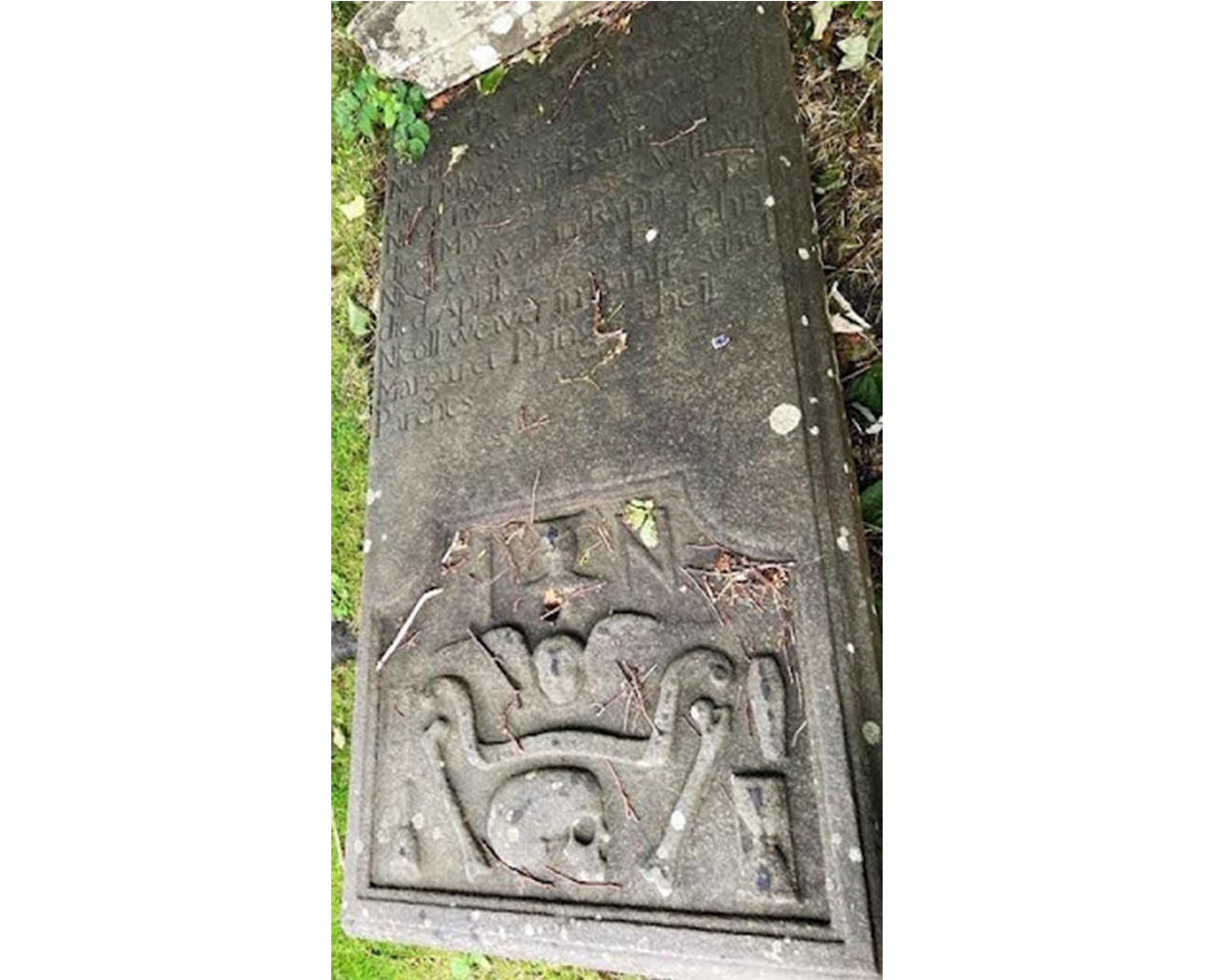
This stone holds a lot of information on the Nicoll's, weavers and tailors in Banff. This is stone no.33 in the graveyard – depicting initials (J & N), an angel, coffin, an upright hourglass, skull and bones as well as tools of the weaver’s trade. The text on the stone states that “This gravestone is erected to the memory of James Nicoll, weaver in Banff, who died May 15th, 1732, Alexander Nicoll, taylor in Banff, who died May 22nd 1735, and William Nicoll, weaver in Banff, who died Aprile 1st, 1738, by John Nicoll, weaver in Banff, and Margaret Pringle, their parents.”
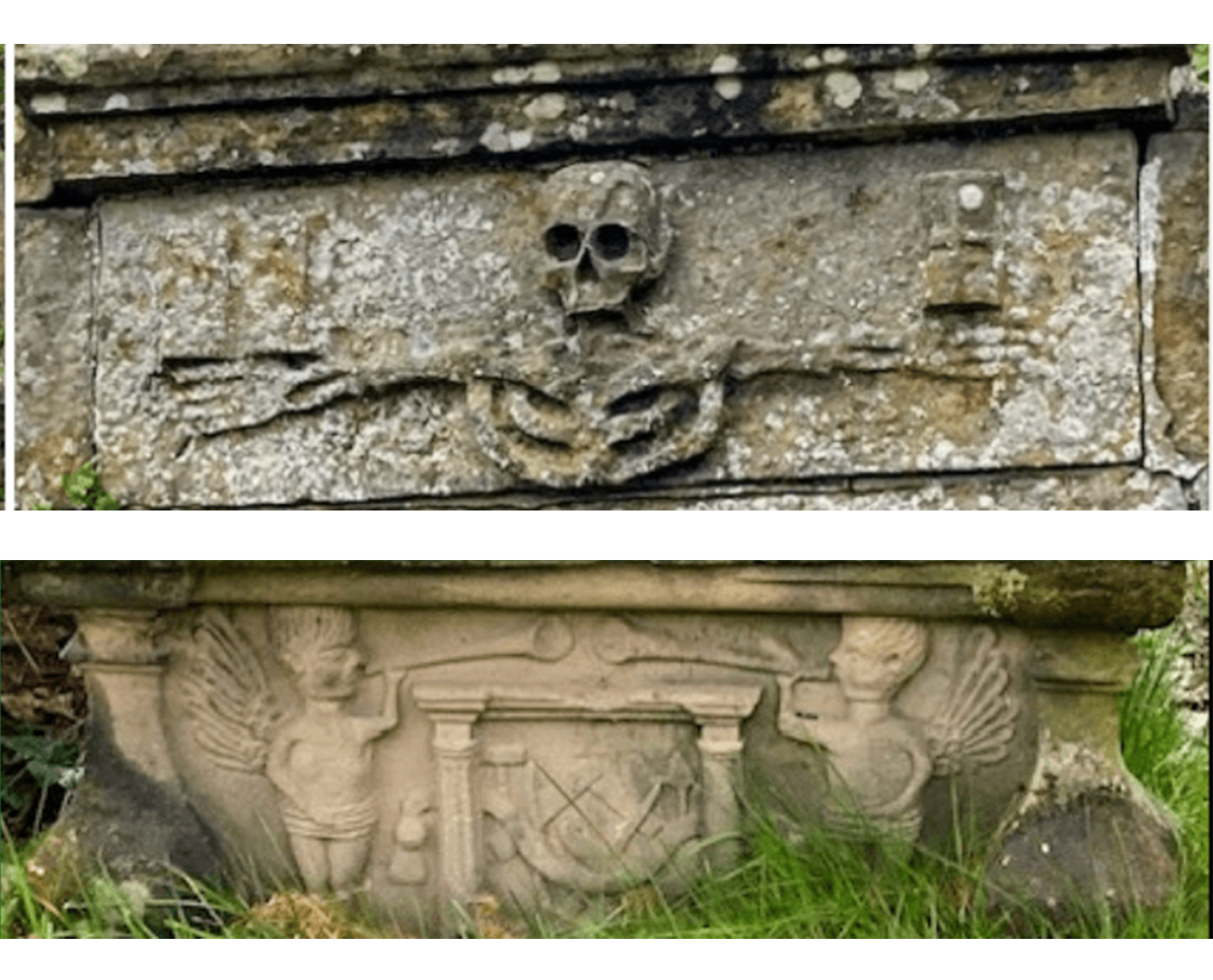
Other examples of stonework which can be found in the kirkyard are:-
There are fantastic resources to help decipher and explain the different gravestone carvings. One I would recommend as an introduction is online and written by the Kincardine Local History Group and can be accessed here (https://kincardinehistory.com/?page_id=231).
The Banff Preservation and History Society publish two volumes which list the grave markings and a numbered guide to the kirkyard (https://www.bphsmob.org.uk/BPHS/books.html). They have made the information which was initially published in the “Annals of Banff”, written by William Cramond and published by the New Spalding Club, 1891, much more accessible.
However, if you are researching ancestors in Banff of this time, it's well worth checking out this book as in the original publication the author mentions a lot of additional history about the kirkyard inhabitants and their ancestors, as he guides you through the kirkyard stones.
For the quickest, easiest and free access, use the ‘Internet Archive’, which offers digitised versions. Some software versions are easier to use that others - I use this one https://archive.org/details/annalsofbanffcom02cram/page/314/mode/2up because it is more reader friendly, has an index (I love an index) and a great text search tool.
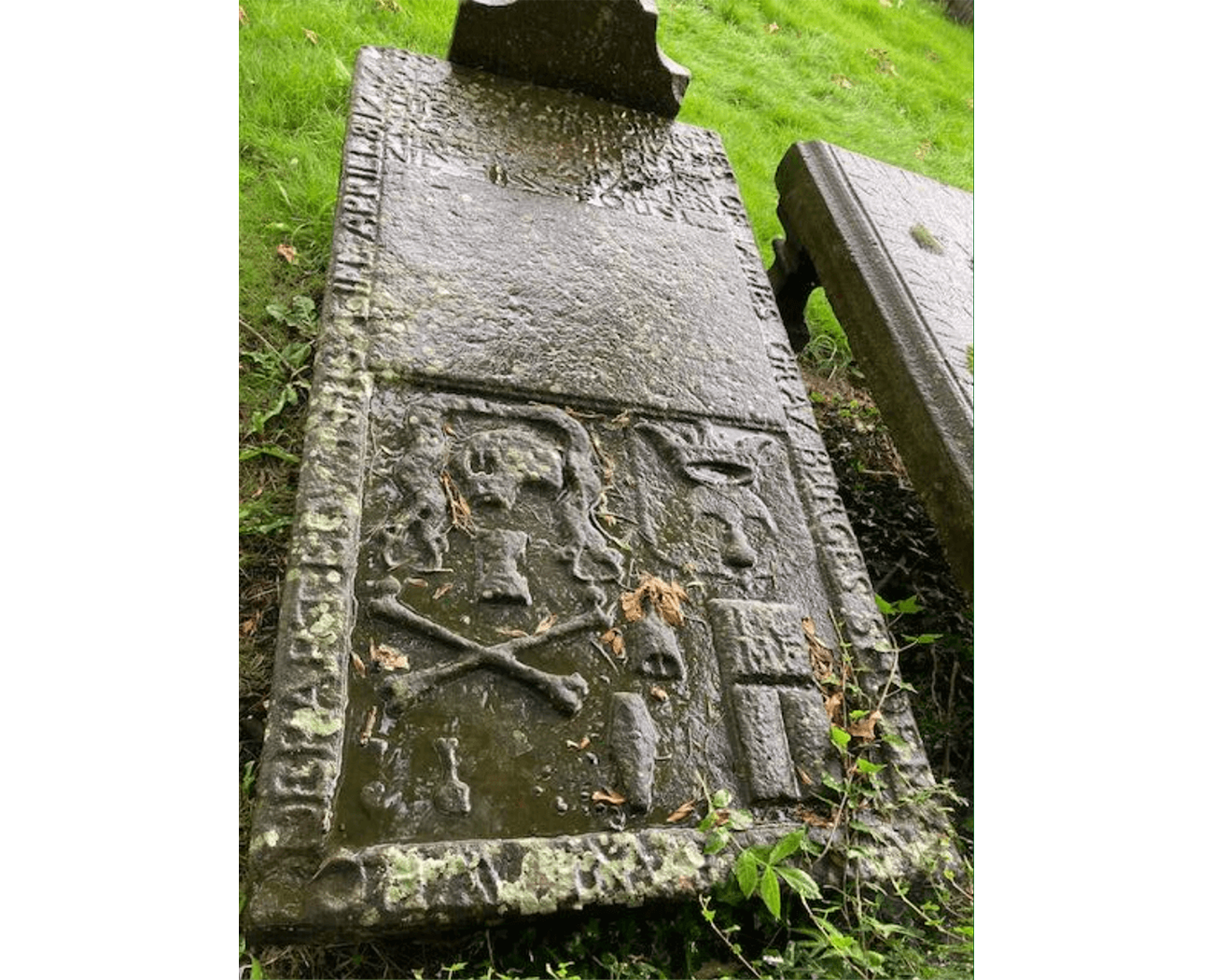
If you want to take photographs of any graveyard stones, think about the time and type of weather. Some of the older stones, show their markings for photography better in wet weather as seen here.
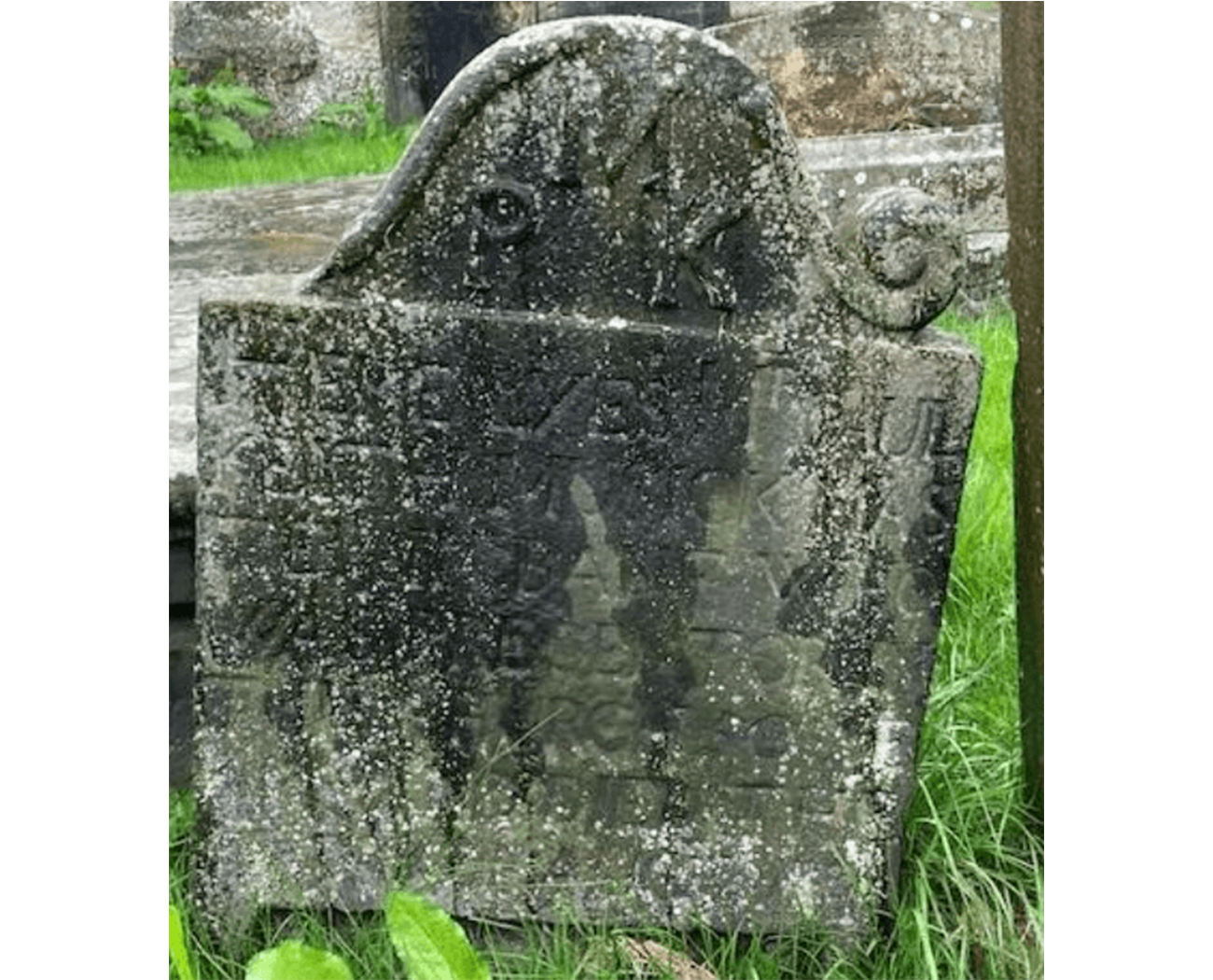
Some of the stones are partially sunken or are at angles that are difficult to catch. Longer grass sometimes hides details. Here is one of my favourite graves, but this photo doesn't do it justice, the weather isn't the ideal for the photo and the longer grass hides the skull and bones at the base of the grave.
It's stone no. 191 and reads “M P K. Here lyes Mr Paul Keith, musick master in Banf, who was precentor in this church for 50 years, and died the 5th day of August 1733”.
In my opinion, the best weather for photographing tombstones is when the frost is on them - you need to wrap up warm for those ones!
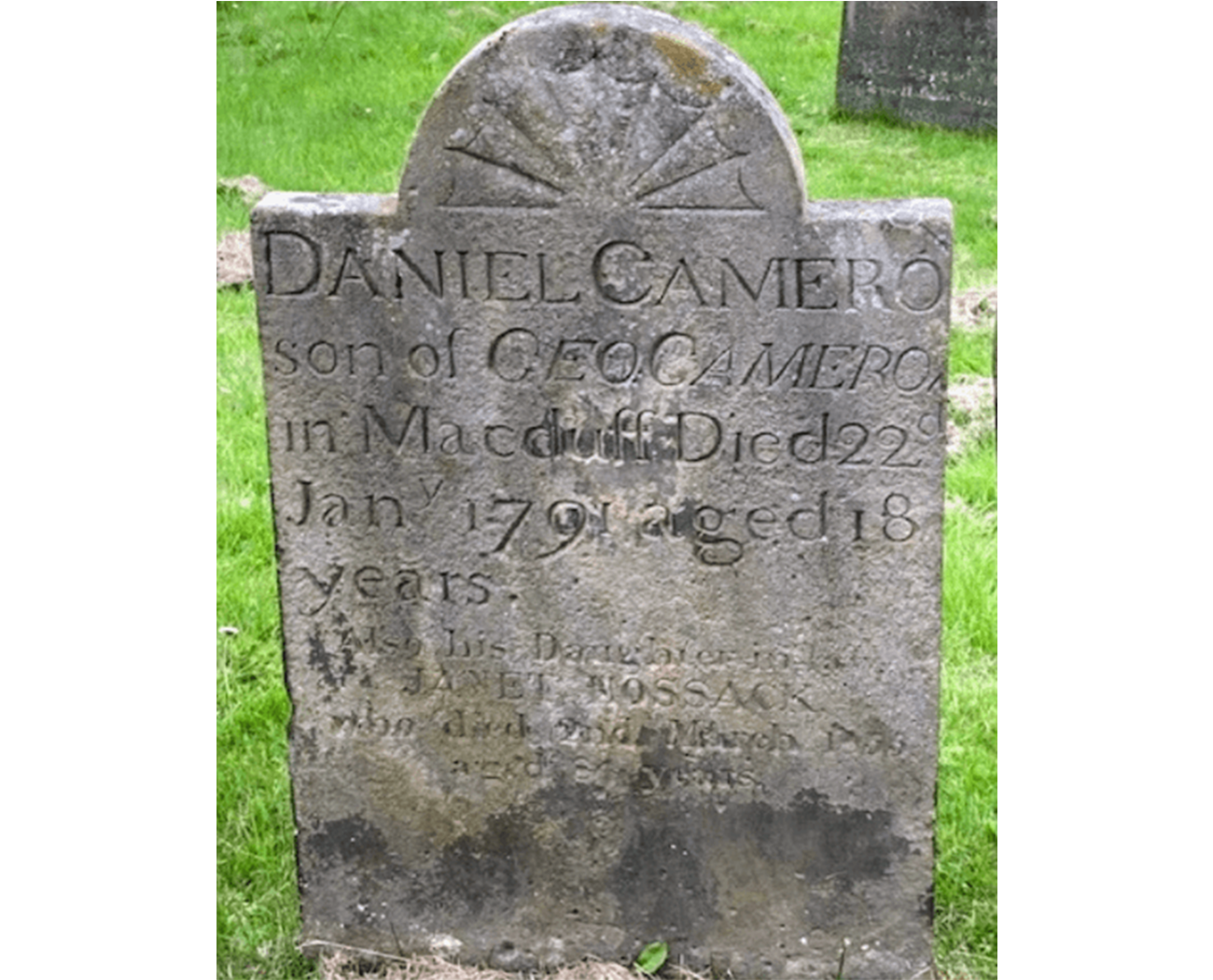
Some of the tombstones are in Latin, a lot are in old Scots and some just need a little more time to read. At first glance the photo here is for someone with the surname "Camero", but on closer inspection you can see the small letter "N" squeezed above. The engraver, maybe an apprentice, just ran out of space.
This is stone no. 374 “Daniel Cameron, son of Geo Cameron in Macduff, died 22nd Jan 1791 aged 18 years, also his daughter-in-law Janet Hossack, who died 2nd March, 1855, aged 84 years”.
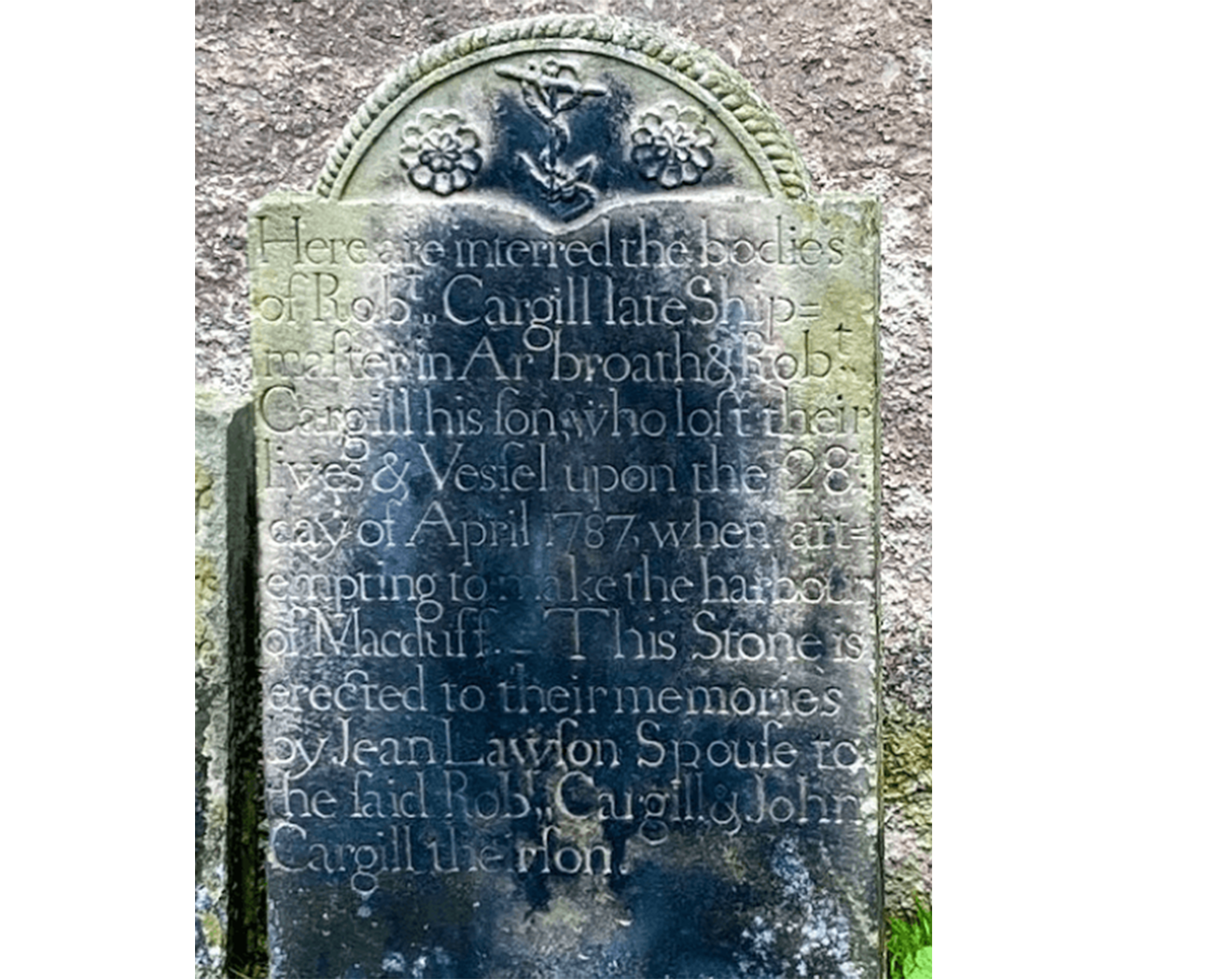
The next photo shows an example of old Scots...
Stone no. 197 and transcribed “Here are interred the bodies of Robt Cargill, later shipmaster in Arbroath, and Robt Cargill, his son, who lost their lives & vessel upon the 28th day of April, 1787, when attempting to make the harbour of Macduff. This stone is erected to their memories by Jean Lawson, spouse to the said Robert Cargill and John Cargill, their son”. The stone is simple and tells the story of four people. It is decorated with the ropework carving and the fouled anchor at the top.
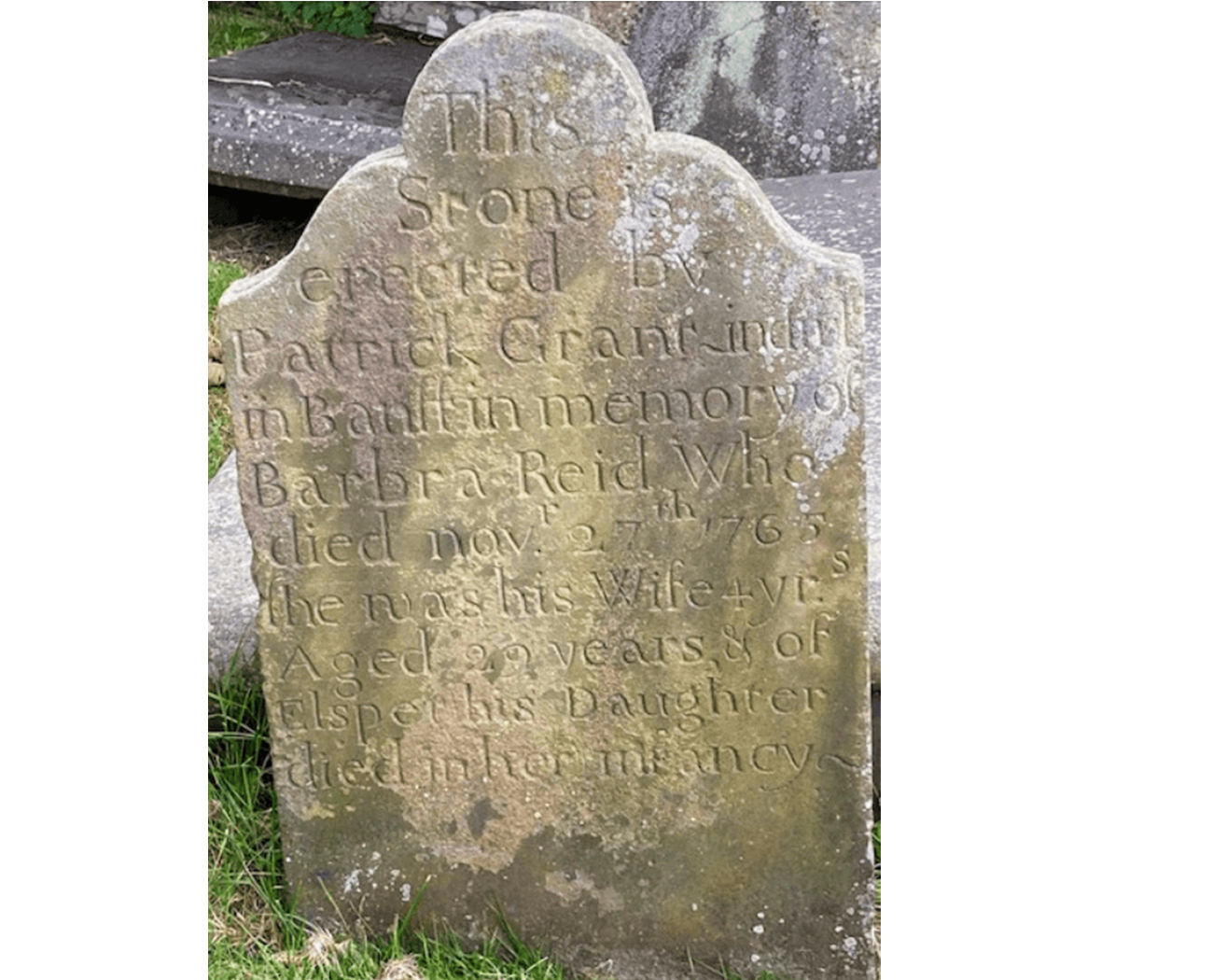
And another favourite...
Stone no.48 “This stone is erected by Patrick Grant, indwl in Banff, in memory of Barbara Reid, who died Novr 27th, 1765. She was his wife 4 years, aged 29 years, & of Elspet, his daughter died in her infancy”.
The ‘Annals of Banff’ state that the stone also has the words “Time flyeth. Death persueth” which aren’t depicted in the photo, so I will have to check that out on my next visit. ‘Indwl’ is short for indweller/ habitant of Banff.
I hope you’ve enjoyed my whistlestop tour around the kirkyard, and that if you are ever visiting the area that you stop in by for a visit.